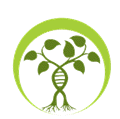I will start by saying that I have been an Ancestry.com subscriber since they began and I think it is a wonderful resource.
BUT, as they say, Buyer Beware!
I am only speaking from experience and not about to point fingers! I only want to help others from making my mistakes. There are trees posted on ancestry.com (and elsewhere) that are well documented and are the result of many years labor in providing as accurate information as possible. But it takes practice and discretion to discover those trees or those parts of trees.
I had a genealogy web site on rootsweb.com many years ago. I posted my family tree with the information available at the time. I also posted photographs, notes, biographies and copies of documents.
The next thing I knew, my own images were coming back to me on ancestry.com as those little leaves. Someone had copied my information from my website and posted it to ancestry.com. Then what felt like hundreds of family trees had populated my information. I have tried to follow trails to see if the poster of the tree has any connection at all to me and rarely did I find one. Yet they have pictures of my grandparents and great grandparents. Can I say, “I feel violated?” Some of those images may even be copyright violations! And now sons are husbands and mothers are nieces, etc. Some families have 20-30 children since the merge feature in ancestry requires a little user input and obviously got none.
Okay, back to my original point. A hard-learned lesson, is to document everything from events to family members. What may seem obvious when reading a census from 1850-1870, the children in the household are the children of the head of household, may not be the case. It is not wise to assume. It’s good to have working hypotheses and to continue from there, but verify, verify and verify.
So back to ancestry.com family trees. You do no one, especially not yourself and your family, any favors by assuming what you have found in the trees is correct. In fact, you may increase your burden dramatically by accepting what you have found as fact.
BEFORE you decide to merge any information from another tree into yours, STOP!
- Review each individual, each event, each fact. Look for the supporting documents. Birth, death and marriage certificates are usually more accurate (not always) in determining the vital and relationship information than census records (or no sources at all). WWI and WWII registration cards will frequently have birth date and place information.
- Judge the records, don’t succumb to the temptation of completing your tree with inadequate data.
- Beware the “Coat of Arms”! Do a google search on Coats of Arms for your family name. Then pick another. Note the similarities. Most coats of arms were created for aristocracy and were individualized, at least in Great Britain. Otherwise it is just fluff, selling to the unwary buyer.
- Genealogies to the Kings and Queens of Europe – Much money was made selling genealogies to the public based on rich, landed, aristocratic ancestors. Many of these published genealogies are still being perpetuated.
And wait, if you think I am being high-handed, I too (or at least my great aunt) was conned. I received a picture of an ancestor in the files my grandmother had. It was printed and published along with a well-documented genealogy report recently. Letters and emails came rolling in. This was a picture of a U.S. President. All those years, my grandmother, great grandmother and great great aunt coveted this photograph and it wasn’t even their ancestor.
I offer a free 30 minute consultation. Please call or email me for questions. It is so much better to start right than to have to backtrack. Been there, done that!

